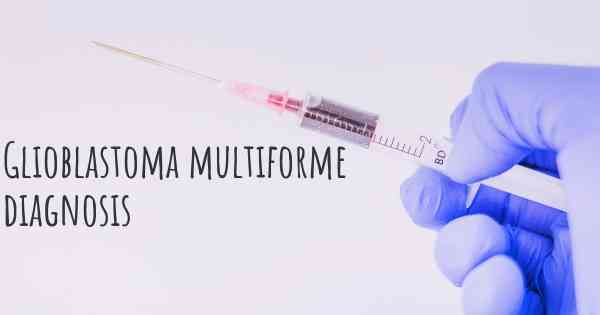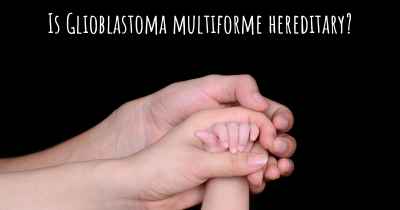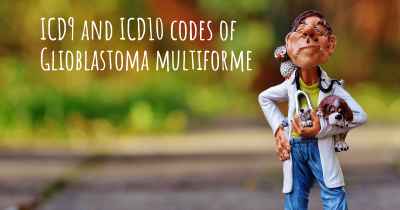How is Glioblastoma multiforme diagnosed?
See how Glioblastoma multiforme is diagnosed. Which specialists are essential to meet, what tests are needed and other useful information for the diagnosis of Glioblastoma multiforme

Glioblastoma multiforme (GBM) is a highly aggressive and malignant brain tumor that arises from glial cells in the brain. It is the most common and deadliest form of primary brain cancer in adults. Diagnosing GBM involves a combination of medical history evaluation, physical examination, imaging tests, and tissue analysis.
Medical History and Physical Examination
When a patient presents with symptoms that may indicate a brain tumor, the first step in the diagnostic process is a thorough medical history evaluation. The doctor will ask about the patient's symptoms, their duration and progression, as well as any relevant medical conditions or family history of cancer.
Following the medical history, a physical examination is conducted to assess neurological function. The doctor will check for any abnormalities in vision, coordination, reflexes, and strength. These examinations help determine the location and extent of the tumor.
Imaging Tests
Imaging tests play a crucial role in diagnosing GBM. They provide detailed images of the brain, allowing doctors to visualize the tumor and its characteristics. The most commonly used imaging techniques for GBM diagnosis include:
Magnetic Resonance Imaging (MRI)
MRI uses powerful magnets and radio waves to create detailed images of the brain. It can help identify the location, size, and shape of the tumor. Additionally, MRI can provide information about the blood flow within the brain, which is important for determining the tumor's aggressiveness.
Computed Tomography (CT) Scan
A CT scan uses X-rays to produce cross-sectional images of the brain. It can help detect the presence of a tumor, evaluate its size, and identify any associated swelling or bleeding. CT scans are particularly useful in emergency situations when immediate diagnosis is required.
Positron Emission Tomography (PET) Scan
PET scans involve injecting a small amount of radioactive material into the body. The radioactive substance accumulates in areas with high metabolic activity, such as cancer cells. By detecting these areas, PET scans can help determine the extent of tumor growth and spread.
Tissue Analysis
While imaging tests provide valuable information, a definitive diagnosis of GBM requires a tissue analysis. This is typically achieved through a surgical procedure called a biopsy. There are two main types of biopsies:
Needle Biopsy
A needle biopsy is a minimally invasive procedure where a thin needle is inserted into the brain to extract a small sample of tissue. This can be guided by imaging techniques such as MRI or CT scan. The sample is then examined under a microscope to determine if it contains cancerous cells.
Surgical Biopsy
A surgical biopsy involves the removal of a larger tissue sample through a more invasive procedure. It is performed when a needle biopsy is not feasible or when a more extensive analysis is required. The tissue sample is sent to a pathology laboratory for examination by a pathologist.
Pathology and Molecular Testing
Once the tissue sample is obtained, it undergoes a series of tests to confirm the diagnosis of GBM and provide additional information about the tumor's characteristics. These tests may include:
Histopathology
Histopathology involves examining the tissue sample under a microscope to assess its cellular structure and identify any abnormal features. GBM is characterized by the presence of specific cellular markers that distinguish it from other brain tumors.
Immunohistochemistry
Immunohistochemistry is a technique used to detect specific proteins in the tissue sample. It helps determine the molecular subtype of GBM, which can have implications for treatment options and prognosis.
Molecular Testing
Molecular testing analyzes the genetic and molecular characteristics of the tumor. It can identify specific mutations or alterations in genes that drive tumor growth. This information is crucial for personalized treatment approaches, such as targeted therapies.
Conclusion
Diagnosing glioblastoma multiforme involves a comprehensive approach that combines medical history evaluation, physical examination, imaging tests, and tissue analysis. While imaging tests provide initial information about the tumor, a definitive diagnosis requires a tissue biopsy and subsequent pathology and molecular testing. Early and accurate diagnosis is essential for determining the appropriate treatment plan and improving patient outcomes.
Posted Sep 14, 2020 by Anita 450
Posted Oct 4, 2017 by carolina 2000








